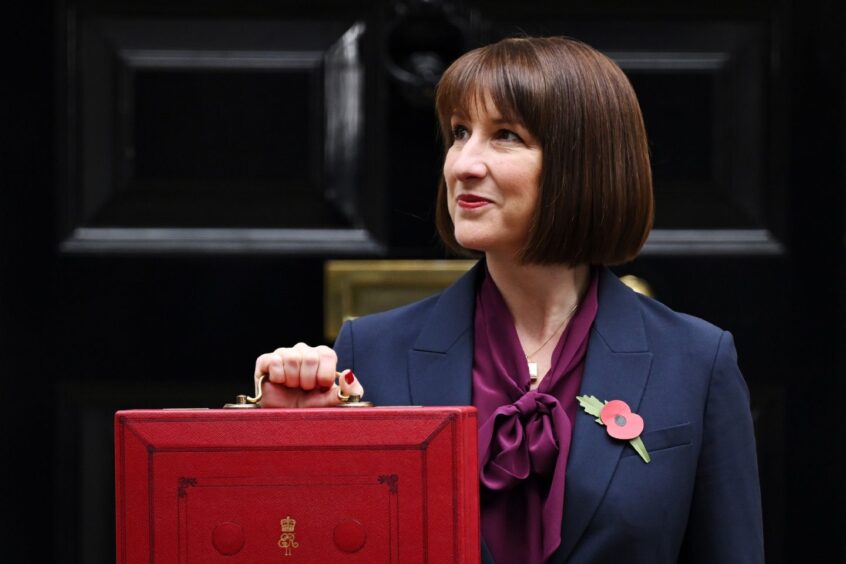
On a blustery morning after the Budget, I took a stroll to clear the political mind. This prompted me, as it occasionally does, to consult the National Grid Live website, a very useful tool which tells us how our electricity is being generated at a given moment.
This time, the answer was just about what I had expected. Nuclear was pitching in a still useful 12%. Interconnectors were importing 14.5%. Wind was providing a healthy 25.8%. And, of course, the biggest single contribution was from gas at 33.7%.
It is an exercise I would commend to all politicians and policymakers to provide them with a necessary sense of realism about how security of supply will be maintained in the decade of transition ahead.
The balance will continue to shift. A decade ago, 25.8% from wind even on a windy day would have seemed ambitious.
In the meantime, we are going to need gas; to diminishing degrees no doubt but the only real question is where it is going to come from.
To what extent are we willing to become reliant on imports and interconnectors, rather than maintaining our own levels of production?
So how did this fit in with the previous day’s Budget? Well, the stats I quoted emphasised the fact that this must be treated as a pragmatic issue rather than an ideological one.
Nobody is really arguing about the final destination. The question is how and when to get there and in the Budget, just perhaps, we began to see recognition of that reality.
Given where this debate was a year ago, I was encouraged by the relatively muted responses from the North Sea industry and its emphasis on the fact that rational discussion is now the order of the day.
The industry had swallowed in advance the three per cent increase in North Sea windfall tax, so no point in getting too excited about its confirmation.
A “difficult day for the sector”, as David Whitehouse of Offshore Energies UK put it. But not the apocalypse.
Mr Whitehouse also acknowledged with approval that “the 100% first-year capital allowance and the decarbonisation allowance will be retained”.
He added: “We welcome that the government will consult in early 2025 on how the oil and gas tax regime can encourage investment and respond to changes in the oil price. We also note the consultation on end-use emissions for oil and gas projects”.
Nobody suggests that all is now sweetness and light between industry and government, but it is a serious step forward that the dangers of cliff edges seem to have been recognised and dialogue has replaced the impasse of unproductive confrontation.
Mike Tholen, OEUK’s sustainability and policy director, summed it up well: “I know there’s been some serious engagement with the sector over the last four or five months … I think we’re moving slowly to a point where everyone is beginning to realise what each other brings to the table”. Progress, indeed.
The other side of the coin is the pace of transition to the cleaner energy mix which everyone wants to see.
On this front, the three months since the General Election, including announcements in the Budget, have created a real sense of momentum and the prospect of vast sums being invested into the UK, and particularly Scottish, economy.
Progress on establishing GB Energy; extension of the Crown Estate’s borrowing powers; the substantial increase in Contract for Difference funding which ensures projects will go ahead and, of course, the change in the Government’s own borrowing rules which will lead to a major capital injection into the economy, with energy transition at the head of the queue…. And that is to mention but a few.
Commitments to hydrogen and carbon capture and storage will impinge directly on businesses involved in the oil and gas sector. So for anyone in search of the half-full glass, rather than the half-empty one, in the north-east as elsewhere, there is plenty to be positive and enthusiastic about.
One of my own hobby-horses in recent years has been to urge support for Pump Storage Hydro and, again, there has been a remarkable breakthrough in recent weeks with Government confirming a cap and floor regime as the investment framework for these hugely capital-intensive projects. This has been talked about endlessly but now we have action.
The attractions of Pump Storage Hydro include the fact that it will create large numbers of jobs in Scotland over the next decade and that is something which, by and large, other renewable energy sectors has failed to deliver. There is now a real feeling of activity and serious investment on many fronts.
That should not be used as a defence for failing to protect what we already have, the bird in the hand and all that. This must include the North Sea oil and gas sector which is an essential partner in everything that lies ahead. More than ever, now that it seems to be happening at an accelerating rate, “transition” must mean exactly what it says.
To anyone who doubts that, I recommend a quick look at the National Grid Live website. Change is indeed blowing in the wind but there is a long way to go and the “homegrown energy transition” must embrace every part of the mix. I am glad that now seems to be recognised.
Recommended for you
